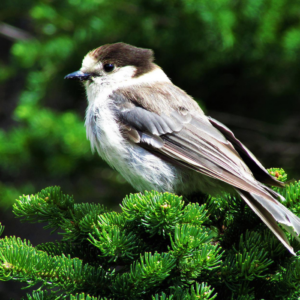Injured Birds: How Can You Help?
February 4, 2011
Helene Van Doninck is a veterinarian at the Cobequid Wildlife Rehabilitation Centre in Truro, Nova Scotia, Canada. The CWRC is a not for profit charitable organization dedicated to providing veterinary care to sick, injured and orphaned wildlife. Helene took the time to share her extensive experience caring for injured birds with us in this post:
Have you ever been in a situation where you have discovered a bird in distress and wished there was something you could do to help?
Luckily, you can help if you contact a wildlife rehabilitation centre where volunteers dedicate their time and skills to helping injured, orphaned and sick birds. As a wildlife veterinarian who operates such a centre, I deal with people who want to help birds that they find, but need some advice and assistance. I give the best advice and care that I can and stress that it is important to bring injured animals to trained individuals, as they often need medical care.
Injured birds can be captured and transported using common objects.
While some of the larger birds can be more dangerous to handle and require special advice (raptors, loons, herons are some examples), most birds can be captured by dropping a towel or blanket over them and scooping them into a plain cardboard box. Remember to poke air holes in the top section of the box, tape it securely and place a towel or other secure footing on the bottom of the box to prevent the bird from sliding on a slippery surface during transport.
Rehabilitation centres are busiest during the spring and summer months when young birds are fledging, but winter months come with their own perils. Our most common reasons for winter admissions include birds that are:
- Hit by cars or have had some other type of trauma
- Injured from striking a window
- Victims of cat predation
- Poisoned by lead
- Oiled
- In a starvation state often due to extreme weather conditions.
Spring and summer admissions include all of the above admission reasons as well as animals that are:
- Orphaned or presumed orphaned
- Contaminated with oil, poisoned, or trapped,
- Victims of gunshot, electrocution, and entrapment.
Rehabilitation centres often will admit all native species unless they specialize in certain groups. At the Cobequid Wildlife Rehabilitation Centre we will admit all bird species, small mammals, reptiles and amphibians. We do have special expertise and interest in raptors, seabirds, and oiled wildlife and our caseload and species diversity changes every year. For instance, in 2010, our most common patients were bald eagles, closely followed by other species of raptors, songbirds, and seabirds.
One of our most recent success stories was the rescue of a barred owl that had been trapped in a coil of wire in a barn for several days in bitter cold before being discovered by the property owner. We received this bird in a weak, dehydrated and semi-comatose state. It needed several days of intensive medical care, but once it survived the initial problem, it simply needed to be fed properly and housed in a safe environment until it was strong and ready for release. It was returned to home territory last week and released in the grateful presence of the finder.
Photos 4-6 courtesy of Sherry Martell
This week brought us a young red-tailed hawk that was hit by a car and received a broken leg, a head injury and some eye damage. The head and eye will heal in time, but the leg is now sporting four metal pins that were placed during a two hour surgery this afternoon. The implants will stay in place until the bone heals. After the pins are removed, the bird will undergo rehabilitation until we are sure it is in the best state possible for release into the wild.
While not every bird brought into our care has such a happy ending, it’s these type of cases that keep us motivated to continue helping birds in distress every day.



